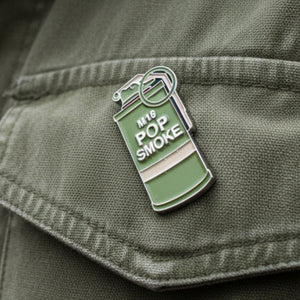U.S. Military Abandons SHiELD Airborne Laser Weapon Program
SCI-FI stuff in the works

(U.S. Navy photo by John F. Williams/Released)
After years of development, the U.S. military’s latest effort at an airborne laser weapon, designed to protect troops from incoming ballistic missiles, appears to be headed for the scrapyard. The Self-Protect High-Energy Laser Demonstrator, or SHiELD, initiated in 2016, aimed to mount laser weapons on fighter jets like the F-22 Raptor and F-35 Lightning II to neutralize incoming air-to-air, surface-to-air, and ballistic missiles targeting U.S. forces abroad.
Gear Spotlight: Relevant to This Story


The Air Force had planned to test the SHiELD system on an F-15 Eagle in fiscal 2024, following a successful ground-based shootdown of test missiles and the receipt of the laser weapon system and pod subsystem. However, these plans have been abandoned. “The SHiELD program has concluded, and there are no plans for further testing and evaluation,” said Dr. Ted Ortiz, SHiELD program manager at the Air Force Research Laboratory’s Directed Energy Directorate. “The Air Force has not installed a laser pod on a fighter jet test bed.”
This marks the second airborne laser weapon effort scrapped by the Air Force in recent months. In March, plans to mount an Airborne High Energy Laser system (AHEL) on an AC-130J Ghostrider gunship were abandoned due to “technical challenges.”
Despite the setback, Air Force officials remain optimistic about the future of airborne laser weapons. “Through SHiELD and related efforts, [the Air Force Research Laboratory] has made significant advances in the readiness of airborne [high-energy laser] technology,” Ortiz said.
The conclusion of the SHiELD program comes as the Defense Department seeks to enhance air defenses for U.S. troops overseas amidst growing missile threats. In January 2020, Iran’s largest ballistic missile attack on American forces resulted in traumatic brain injuries among over 110 service members. More recently, Iran-backed militias have targeted U.S. forces in Iraq and Syria in response to Israel’s military campaign in Gaza.
The Pentagon has increasingly considered directed-energy weapons like lasers as cost-effective alternatives to traditional air defense systems. The Army has deployed ground-based laser weapons overseas to counter drones, and the Pentagon is investing $1 billion annually in at least 31 directed-energy programs.
Developing effective airborne laser weapons has been challenging, primarily due to power generation and atmospheric turbulence. Former Pentagon research chief Mike Griffin highlighted these issues in 2020, explaining that generating the necessary power from a small tactical aircraft and maintaining a coherent laser beam in combat conditions are significant hurdles.
Despite these challenges, the Air Force is exploring other applications for the laser technology developed through the SHiELD program. The potential benefits of high-energy laser weapons, such as a deep magazine and speed-of-light engagement, continue to drive interest in their development. “After many years of development, HEL weapons are now a battlefield reality,” Ortiz said. “The game-changing features of HEL weapons make air platform integration a natural next step.”
With SHiELD and AHEL programs concluded, the dream of airborne laser weapons remains distant. However, the Pentagon’s ongoing investment in directed-energy technologies indicates that efforts in this arena are far from over.












